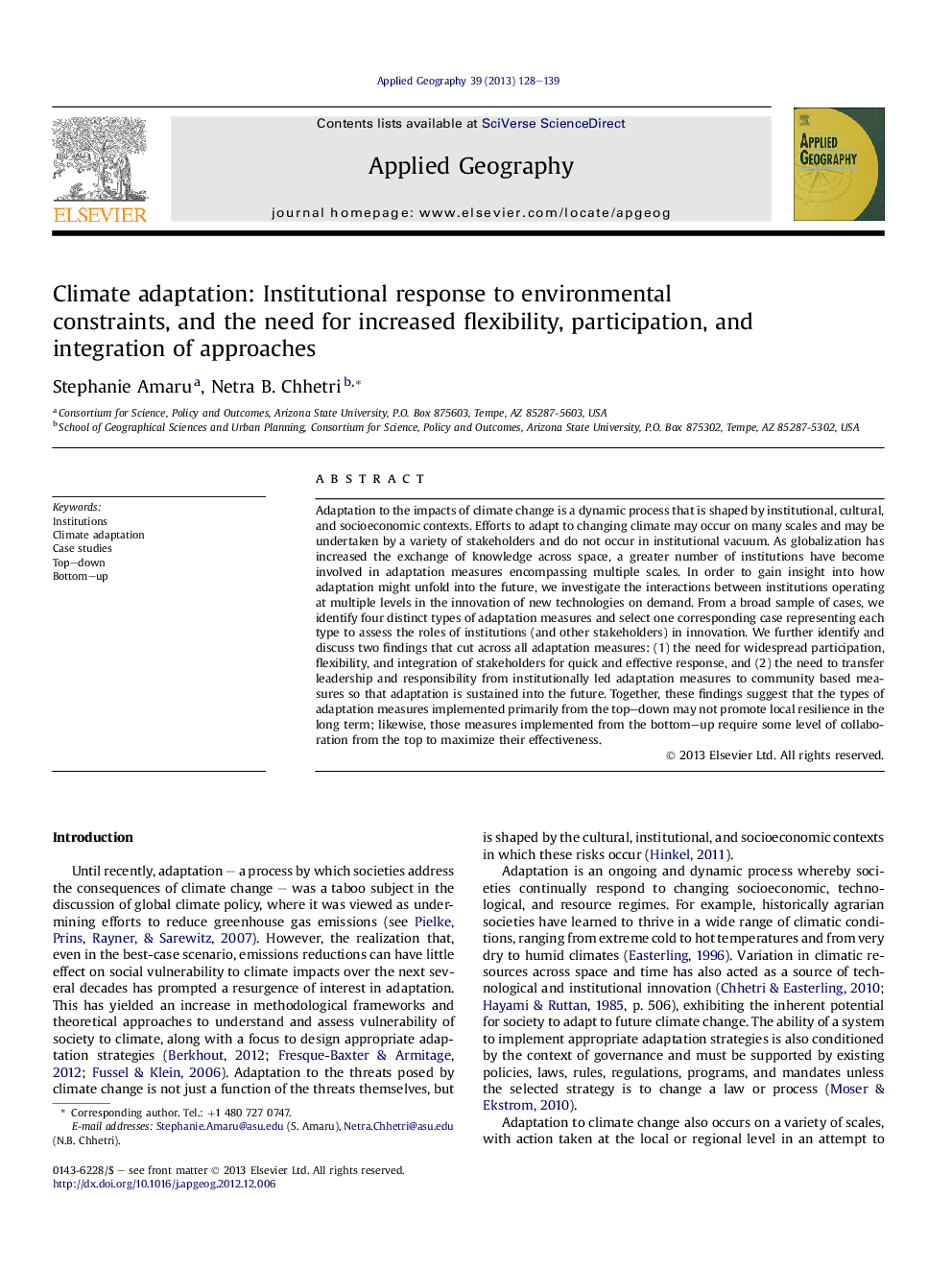| کد مقاله | کد نشریه | سال انتشار | مقاله انگلیسی | نسخه تمام متن |
|---|---|---|---|---|
| 83723 | 158735 | 2013 | 12 صفحه PDF | دانلود رایگان |

Adaptation to the impacts of climate change is a dynamic process that is shaped by institutional, cultural, and socioeconomic contexts. Efforts to adapt to changing climate may occur on many scales and may be undertaken by a variety of stakeholders and do not occur in institutional vacuum. As globalization has increased the exchange of knowledge across space, a greater number of institutions have become involved in adaptation measures encompassing multiple scales. In order to gain insight into how adaptation might unfold into the future, we investigate the interactions between institutions operating at multiple levels in the innovation of new technologies on demand. From a broad sample of cases, we identify four distinct types of adaptation measures and select one corresponding case representing each type to assess the roles of institutions (and other stakeholders) in innovation. We further identify and discuss two findings that cut across all adaptation measures: (1) the need for widespread participation, flexibility, and integration of stakeholders for quick and effective response, and (2) the need to transfer leadership and responsibility from institutionally led adaptation measures to community based measures so that adaptation is sustained into the future. Together, these findings suggest that the types of adaptation measures implemented primarily from the top–down may not promote local resilience in the long term; likewise, those measures implemented from the bottom–up require some level of collaboration from the top to maximize their effectiveness.
► We analyze four cases of different types of local climate adaptation.
► We examine roles of “top–down” and “bottom–up” actors.
► We identify a need for widespread participation and collaboration of stakeholders.
► We identify the goal of less dependence on outside institutions for future success.
Journal: Applied Geography - Volume 39, May 2013, Pages 128–139